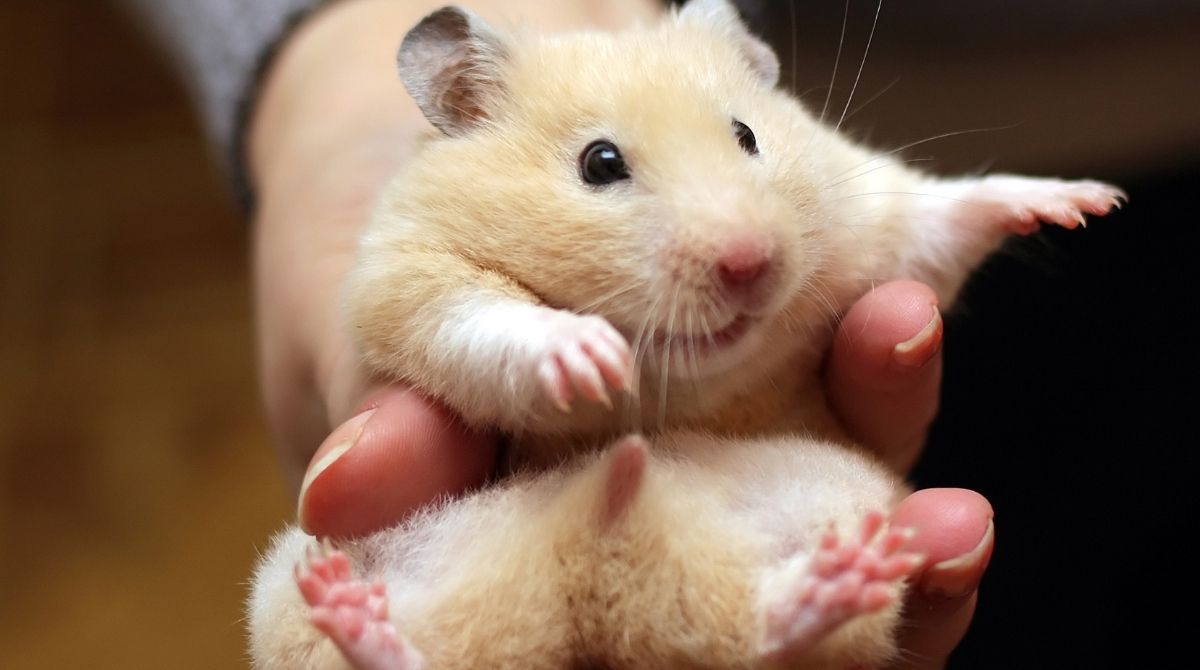Hamsters, with their small size and gentle nature, have become popular pets among animal lovers. However, as with any living creature, hamsters have a limited lifespan, and there may come a time when you need to provide comfort and support to a dying hamster.
During this delicate period, it is essential to prioritize your hamster’s well-being and provide a nurturing environment. In this guide, we will discuss ways to comfort a dying hamster with compassion and sensitivity.
Recognizing the Signs of a Dying Hamster: Before discussing how to comfort a dying hamster, it is crucial to understand the signs that indicate a hamster is nearing the end of its life. These signs may include:
- Loss of Appetite: A dying hamster may lose interest in food and exhibit reduced or no appetite.
- Lack of Energy: The hamster may become lethargic, spending most of its time resting and showing decreased activity levels.
- Weight Loss: Dying hamsters often experience weight loss due to a reduced ability to eat and process food.
- Respiratory Distress: Labored breathing, wheezing, or gasping for breath are common signs of respiratory distress in a dying hamster.
- Changes in Behavior: A dying hamster may display changes in behavior, such as decreased grooming, decreased interaction with its surroundings, or seeking solitude.
Understanding these signs will help you identify when your hamster requires additional care and support during its final days.
Creating a Comforting Environment: To provide comfort to a dying hamster, it is important to create a peaceful and nurturing environment. Consider the following:
- Temperature and Lighting: Ensure the room temperature is comfortable for your hamster, avoiding extremes of heat or cold. Provide soft, dim lighting to create a calm atmosphere.
- Reduce Stress: Minimize loud noises, sudden movements, and disruptions in the hamster’s environment. Keep the surroundings quiet and peaceful to alleviate stress.
- Familiar Surroundings: Place the hamster’s cage or enclosure in a familiar location, as changing its environment during this sensitive time can cause further distress.
- Soft Bedding: Provide soft and cozy bedding materials that are gentle on your hamster’s body. Opt for materials such as shredded paper, tissue, or soft cloths.
Offering Physical Comfort: While providing emotional support is crucial, physical comfort is equally important. Consider the following ways to offer physical comfort to a dying hamster:
- Maintain Hygiene: Keep the hamster’s cage clean and odor-free. Regularly clean soiled bedding and provide fresh water to ensure your hamster remains comfortable.
- Easy Access to Essentials: Place food, water, and bedding materials in easily accessible locations within the cage. This will minimize the hamster’s energy expenditure and make it easier for it to fulfill its basic needs.
- Gentle Handling: If your hamster is comfortable with being handled, gently hold and stroke it, taking care not to cause any distress or discomfort. Ensure you support its body properly, allowing it to feel secure and loved.
- Soothing Sounds: Soft, soothing sounds such as gentle music or calm nature sounds can create a relaxing environment for your hamster. Avoid sudden or loud noises that may startle or stress the animal.
Providing Emotional Support: Offering emotional support is essential when comforting a dying hamster. While hamsters may not respond in the same way as humans, they can still benefit from a compassionate and caring presence. Consider the following emotional support strategies:
- Quiet Presence: Spend time near your hamster’s cage, sitting quietly and providing a calming presence. Avoid sudden movements or loud noises that may startle the hamster.
- Gentle Talking: Speak softly and soothingly to your hamster. The sound of your voice can provide comfort and reassurance.
- Bonding Time: If your hamster enjoys interaction, engage in gentle playtime or provide opportunities for bonding activities. This may include allowing your hamster to crawl onto your hand or providing safe toys for gentle exploration.
- Avoid Overstimulation: While it is important to offer emotional support, be mindful not to overstimulate a dying hamster. Respect its need for rest and solitude when necessary.
- Monitor for Discomfort: Continuously observe your hamster for signs of pain or discomfort. If necessary, consult a veterinarian to discuss potential pain management options to ensure your hamster’s comfort.
Coping with Grief: The impending loss of a beloved pet can be emotionally challenging. It is important to acknowledge your feelings and seek support during this difficult time. Reach out to friends, family, or support groups who can understand and empathize with your grief. Remember to take care of yourself, allowing yourself time to process your emotions and heal.
Comforting a dying hamster requires compassion, sensitivity, and a deep understanding of their needs. Creating a comforting environment, offering physical comfort, and providing emotional support are key aspects of caring for a dying hamster.
By recognizing the signs of a dying hamster and responding with love and care, you can ensure their final days are as peaceful and comfortable as possible.
Remember, being there for your hamster and offering a soothing presence is a valuable gift during this challenging time.


